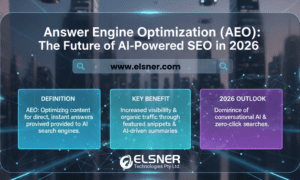User Experience (UX) design has always been about understanding people. While design aesthetics and technology shape the interface, the heart of UX lies in empathy—discovering what users need, how they think, and what motivates their decisions.
In today’s digital landscape, UX has become a science of blending human insight with data intelligence. A human factors consultant plays a vital role in this process—bridging psychology, usability, and technology to ensure digital experiences align with real human behavior. Artificial Intelligence (AI) now amplifies this capability, enabling designers to interpret massive amounts of behavioral data and craft experiences that feel personal, fluid, and predictive.
Businesses are realizing that great UX isn’t just about function—it’s about connection. Users expect digital products to anticipate their needs, respond naturally, and uphold transparency.
The Rise of AI in UX Design
AI is transforming the core mechanics of UX. Instead of relying solely on manual testing or intuition, designers now use machine learning models to analyze real user behavior at scale.
According to McKinsey’s 2023 report on AI adoption, 85% of companies use AI to drive customer experience improvements—a massive shift in how products are built and refined.
Here’s how AI enhances UX design:
- Predictive analytics forecast what users will do next, allowing proactive design decisions.
- Adaptive interfaces adjust layouts and content based on behavior, device, or time of day.
- Automated user testing identifies friction points instantly, streamlining the iteration process.
However, AI doesn’t replace human designers—it empowers them. Partnering with a human centered design consultant ensures that AI-driven data insights are interpreted through empathy and context, translating analytics into meaningful, human-focused experiences that genuinely serve people.
Hyper-Personalization: Tailoring Experiences to Individual Users
Personalization has moved beyond remembering a user’s name or purchase history. Modern UX design utilizes contextual and emotional data to deliver experiences that adapt in real-time.
AI systems now assess factors like:
- Device type and browsing context
- Location and environment
- Behavioral signals (scrolling speed, pauses, navigation choices)
- Even inferred emotional states through sentiment analysis
For instance, streaming or shopping platforms utilize deep learning to suggest content that aligns with each user’s current mood and activity pattern. According to Forbes, businesses that implement AI-driven personalization experience higher engagement and retention—proof that personalization is most effective when grounded in human behavior.
But personalization must be transparent and ethical. Users are more aware of data collection than ever, and trust depends on clarity, consent, and respect for privacy.
Conversational Interfaces and Natural Language Processing
Conversational UX marks a turning point in how users interact with technology. Instead of clicking and scrolling, users can speak, ask, and respond naturally, just as they would with another person.
Powered by Natural Language Processing (NLP), today’s chatbots and virtual assistants:
- Understand context and tone
- Predict user intent
- Offer proactive solutions when friction is detected
This evolution transforms UX from static navigation to fluid communication. By 2025, conversational interfaces will extend beyond customer service—into onboarding, e-commerce guidance, and everyday task automation—creating experiences that feel human by design.
Generative AI in UI/UX Design
Generative AI tools are revolutionizing how designers work. By automating repetitive processes such as wireframing, layout generation, and color optimization, these systems enable designers to focus on human insight and strategy.
Modern UX teams use AI to:
- Generate multiple prototype variations in minutes
- Test and refine interfaces based on real-time analytics
- Adapt UIs dynamically as user behavior evolves
This doesn’t make design less human—it makes it more responsive. Generative design works when creativity and computation merge, enabling faster experimentation and more meaningful outcomes for users.
Voice and Gesture-Based Interactions
As interfaces evolve, UX is becoming more natural and embodied. Voice and gesture-based interactions enable users to navigate systems seamlessly, eliminating the need to look at or touch a screen.
AI-driven voice recognition now interprets tone, accent, and intent with remarkable accuracy. Meanwhile, gesture recognition enables subtle and intuitive movements for control, especially in AR/VR, wearable technology, and smart home environments.
WIRED notes that technologies like Google Assistant have paved the way for interactions that feel conversational and inclusive. This isn’t just innovation—it’s accessibility. Touchless UX expands usability for everyone, including those with physical or situational limitations.
Immersive Experiences with AR and VR
Augmented Reality (AR) and Virtual Reality (VR) are redefining what UX can be. No longer confined to screens, users can now step inside experiences, engaging with information in a spatial and emotional way.
In UX design, AR/VR is used to:
- Create interactive shopping and learning environments
- Simulate real-world conditions for training and collaboration
- Build immersive product visualizations and brand storytelling
The key challenge in immersive UX is maintaining balance—blending engagement with clarity, ensuring users feel grounded and in control. When done right, AR and VR create experiences that feel not only innovative but also humanly intuitive.
Ethical and Sustainable UX Design
As AI and data collection become increasingly ubiquitous, ethics must be integrated into the UX process from the outset. Users today expect more than convenience—they demand transparency, inclusion, and sustainability.
Ethical UX design includes:
- Explaining how and why data is collected
- Reducing algorithmic bias
- Avoiding manipulative “dark patterns”
- Designing for accessibility and energy efficiency
Sustainable UX also considers digital resource use—optimizing sites to consume less bandwidth and energy while ensuring longevity and scalability. Ultimately, trust is the new metric of success in UX. Products that prioritize ethical design not only protect users but foster stronger, more enduring relationships with them.
Final Thoughts
The future of UX is not just intelligent—it’s empathetic. AI, personalization, and immersive technologies are redefining how digital products interact with people, but the foundation of great UX remains the same: human-centered design guided by data, empathy, and ethics.
As technology evolves, designers must ask not only “Can we build this?” but “Should we—and how will it make people feel?”
UX works best when innovation serves humanity—creating experiences that are smarter, kinder, and more meaningful with every interaction.



































